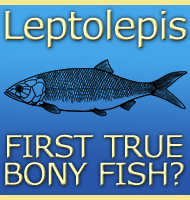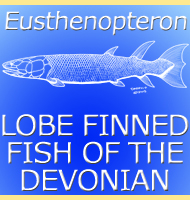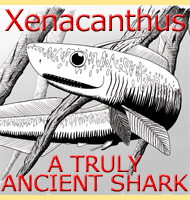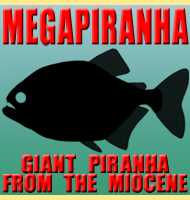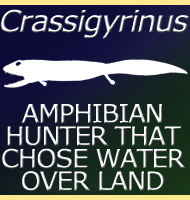


Canobius
Name: Canobius.
Phonetic: Can-o-be-us.
Named By: Traquair - 1881.
Classification: Chordata, Actinopterygii,
Palaeonisciformes.
Species: C. elegantulus, C.
macrocephalus, C. politus, C. pulchellus, C. ramsayi.
Diet: Carnivore/Plankton feeder.
Size: About 7 centimetres long.
Known locations: Scotland.
Time period: Visean of the Carboniferous.
Fossil representation: Several specimens.
Canobius was a small ray-finned fish of the early Carboniferous period. Canobius is noteworthy because it is one of the first genera of ray-finned fish which had a re-arrangement of the head and jaw bones so that the jaws hung vertically beneath the braincase. This had the effect of the jaws being capable of opening much wider than in primitive forms, but this adaptation went far beyond just feeding. A wider mouth opening meant that a greater amount of water could now pass over the gills, greatly increasing the rate of oxygen absorption from the water. This was a particularly significant adaptation because many of waters of the carboniferous ecosystems would have been filled with decaying plant matter, a process which meant that the water would have had a greatly reduced oxygen content. An adaptation to make the most of the available oxygen meant that Canobius could fare much better than more primitive fish forms in such waters.
----------------------------------------------------------------------------
Random favourites
 |
 |
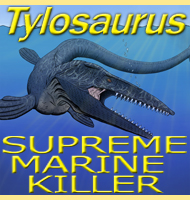 |
